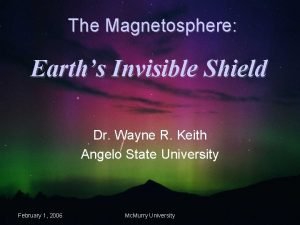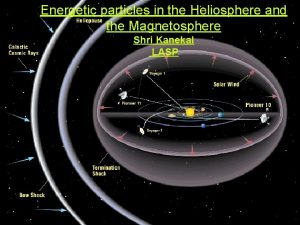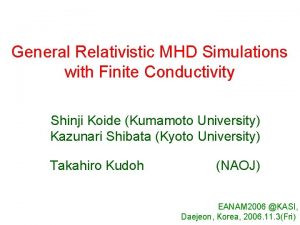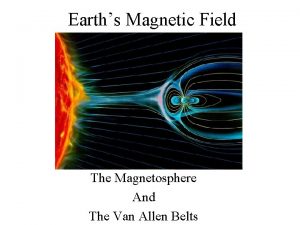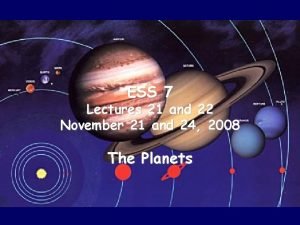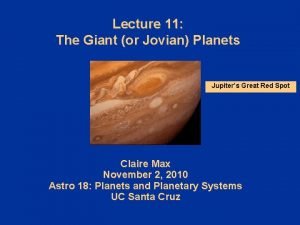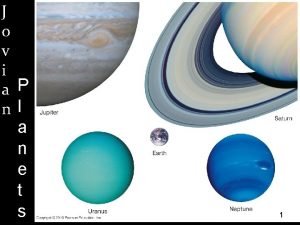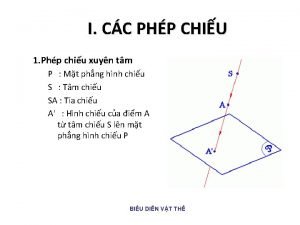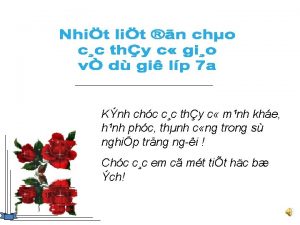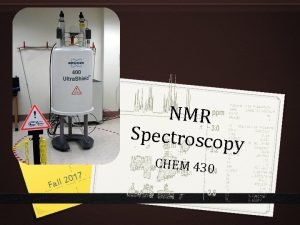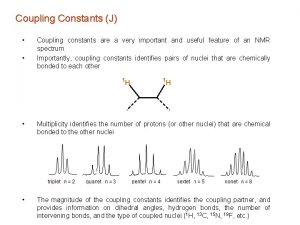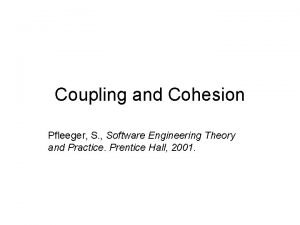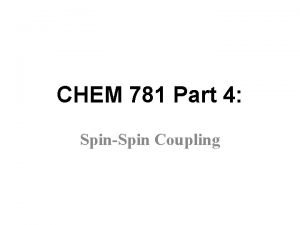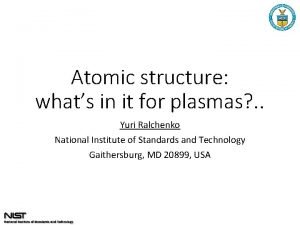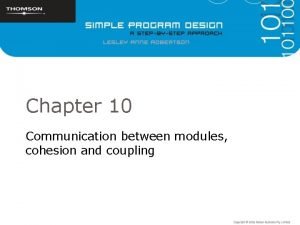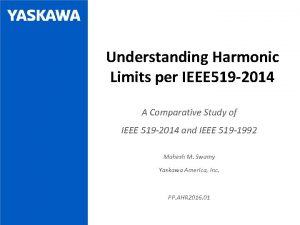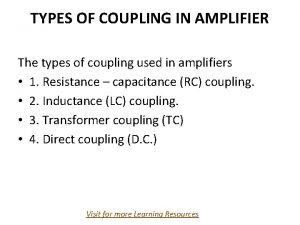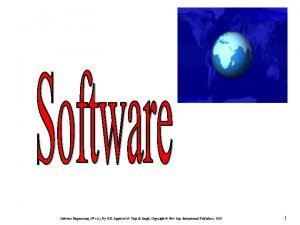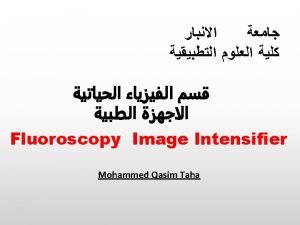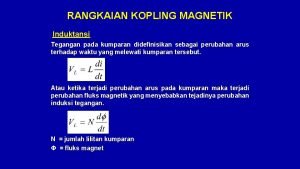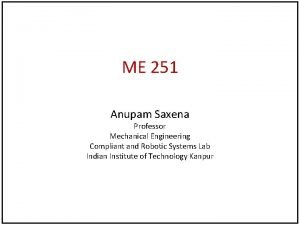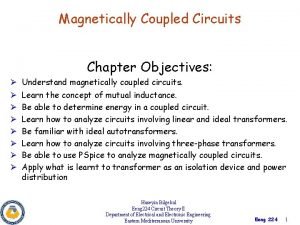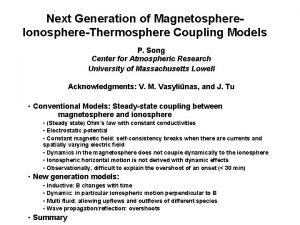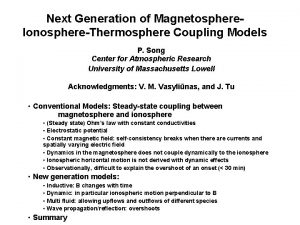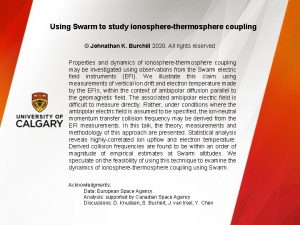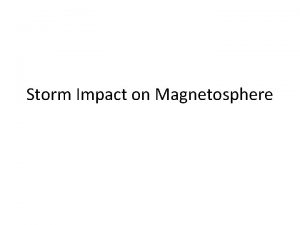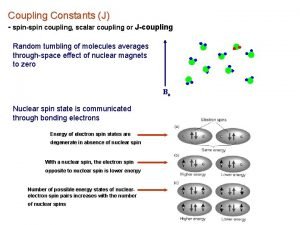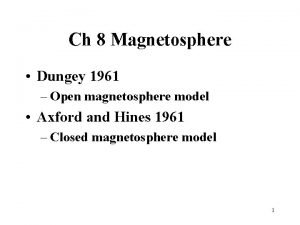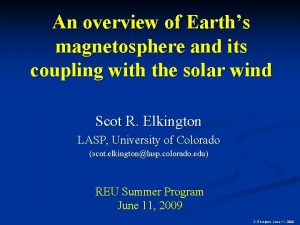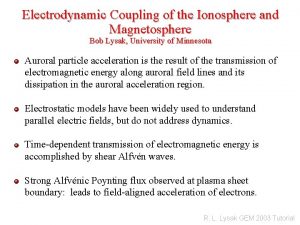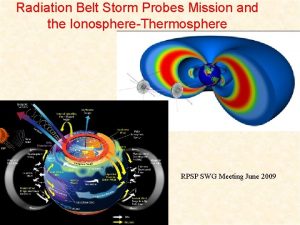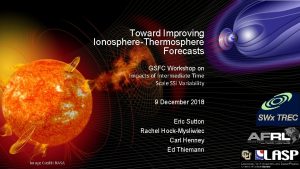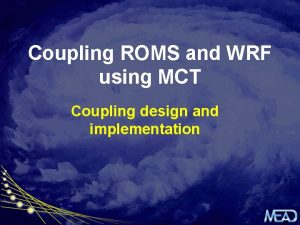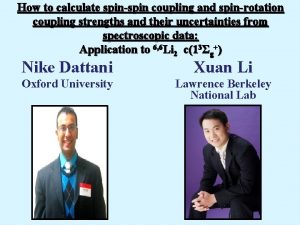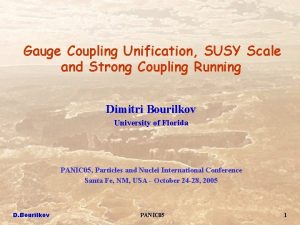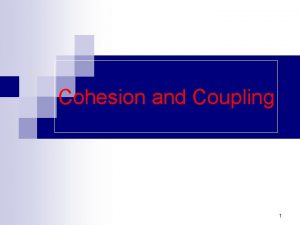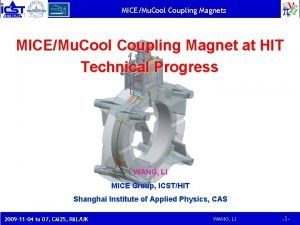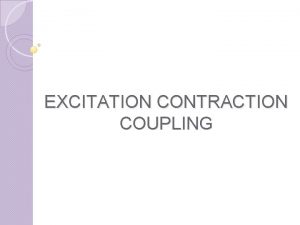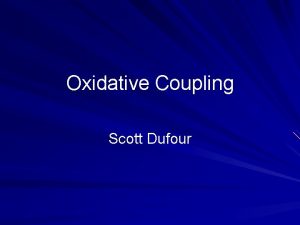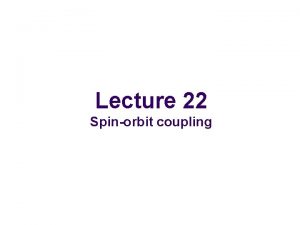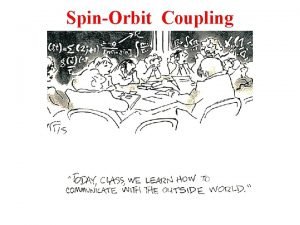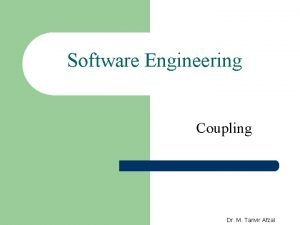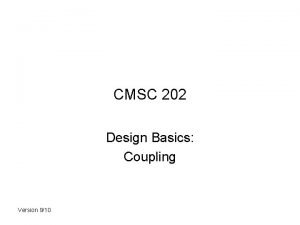Dynamic Coupling of Magnetosphere and IonosphereThermosphere P Song




























- Slides: 28

Dynamic Coupling of Magnetosphere and Ionosphere/Thermosphere P. Song and J. Tu University of Massachusetts Lowell Acknowledgments: V. M. Vasyliūnas • Conventional M-I-T Coupling: E-J paradigm • New M-I-T Coupling: B-V paradigm • Physical differences • 2 -D simulations • Summary

Field-aligned Current Coupling Models Full dynamics Electrostatic Steady state (density and neutrals time varying) • coupled via field-aligned current, closed with Pedersen current • Ohm’s law gives the electric field and Hall current • electric drift gives the ion motion

M-I Coupling • Explain the observed ionospheric responses to solar wind condition/changes, substorms and auroras etc. and feedback to the magnetosphere (not to simply couple codes) • Conventional: E-J paradigm: • • • Electric potential (mostly measured from velocity!) Electric potential mapping Ex. B drift (but V should be derived from momentum equation!) Field-aligned current (mostly measured from magnetic perturbations!) Pedersen currents Hall currents (inferred from magnetic field variations on ground) • New concepts: B-V paradigm: • • • Convection: velocity, V, d. V Magnetic perturbation: B, d. B Magnetic tension force Poynting flux, wave propagation/reflection Alfven wave, fast mode wave The two descriptions are identical in steady state

Theoretical Basis for Conventional Coupling Models • B 0 >>δB and B 0 is treated as time independent in the approach, and δB is produced to compare with observations • • • not a bad approximation questionable for short time scales: dynamics questionable for short time scales • BUT • Time scale to reach quasi-steady state δt~δLδB/δE • given δL, from the magnetopause to ionosphere, 20 Re • δB, in the ionosphere, 1000 n. T • δE, in the ionosphere, for V~1 km/s, 6 x 10 -2 V/m • δt ~ 2000 sec, 30 min, substorm time scale! • Conventional theory is not applicable to substorms, auroral brightening!

Eugene Parker (2007): “It is here that a fundamental misunderstanding has become widely accepted, mistaking the electric current j and electric field E to be fundamental physical entities… Magnetospheric physics has suffered severely from this misdirection…” The success of the E-J paradigm in description of slow processes (quasi-steady state) has been used to justify the E-J approach and generalize to dynamic processes For dynamic processes-- substorms, auroral brightening-– the E-J paradigm cannot describe the overshoot processes and the substorms have been the leading outstanding problem in magnetospheric physics Time scale for “fast” <30 min

North Pole, Winter Solstice

Ionospheric Dynamic Processes An overshoot lasting 40 min was seen on ground but not in geosynchronous orbits; indicating the overshoot is related to the ionospheric processes Epoch analysis showing on average an overshoot in ionospheric velocity for 30 min. Huang et al, 2009

Ion-neutral Interaction • • • Magnetic field is frozen-in with electrons Plasma (red dots) is driven with the magnetic field (solid line) perturbation from above Neutrals do not directly feel the perturbation while plasma moves Ion-neutral collisions accelerate neutrals (open circles), strong friction/heating Longer than the neutral-ion collision time, the plasma and neutrals move nearly together with a small slippage. Weak friction/heating On very long time scales, the plasma and neutrals move together: no collision/no heating

Ionosphere Reaction to Magnetospheric Motion • Slow down wave propagation (neutral inertia loading) • Partial reflection • Drive ionosphere convection – Large distance at the magnetopause corresponds to small distance in the ionosphere – In the ionosphere, horizontal perturbations propagate in fast mode speed – Ionospheric convection modifies magnetospheric convection (true 2 -way coupling)

Global Consequence of A Poleward Motion • Antisunward motion of open field line in the open-closed boundary creates – a high pressure region in the open field region (compressional wave), and – a low pressure region in the closed field region (rarefaction wave) • • • Continuity requirement produces convection cells through fast mode waves in the ionosphere and motion in closed field regions. Poleward motion of the feet of the flux tube propagates to equator and produces upward motion in the equator. Ionospheric convection will drive/modify magnetospheric convection

Expected Heating Distribution sun • For uniform conductivity, velocity pattern coincides with the magnetic perturbation. • FAC forms at the center of the convection cells • Poynting flux is proportional to V 2, weakest at the center of convection cells • Neglecting the heating from precipitation particles, – Conventional model (EJ paradigm) predicts heating, J 2/ p, is highest at the FAC – New model (BV paradigm) predicts heating, in i. V 2, is highest at compression region of dayside and nightside cusps and strong along the noon-midnight meridian

M-I Coupling via Waves (Perturbations) • The interface between magnetosphere and ionosphere can be idealized as a contact discontinuity with possible small deformation as the wave oscillates • Magnetospheric (fast/Alfvenic) perturbation incident onto the ionospheric interface • For a field-aligned fast/Alfvenic incidence (for example on cusp ionosphere) B k, B 0 : B in a plane normal to k (2 possible components) • Polarizations (reflected and transmitted) (noon-midnight meridian) • Alfven mode (toroidal mode) B, u k-B 0 plane Magnetosphere • Fast/slow modes Ionosphere (poloidal mode) B, u in k-B 0 plane • Antisunward ionospheric motion =>fast/slow modes (poloidal) => NOT Alfven mode (toroidal)

• Amplification of Magnetic Perturbation at the Ionosphere At the magnetosphereionosphere boundary, the boundary conditions are maintained by the incident, reflected and transmitted perturbations. • The reflected perturbations have a phase reversal between d. B and d. V from the incident. • The inertia of the ionospheric plasma minimizes the velocity change across the boundary • The magnetic perturbation nearly doubles across the boundary => forming a strong current

Comparison of Steady-state Coupling with Dynamic Coupling • Coupling speed Vphase – Steady-state Coupling • Original model (Vasyliunas, 1970, Wolf, 1970): not specific, presumed to be VA • Implemented in simulations: (instantaneously) – Dynamic Coupling: Vphase ~ α 1/2 VA ( is neutral inertia loading factor) • Coupling time δt – Steady-state Coupling • Original model: • Implemented in simulations: – Dynamic Coupling: not specified, ~0 1~2 min (Alfvén transient) 30 min (M-I equilibrium) 1~3 hours (neutral acceleration)

Comparison of Steady-state Coupling with Dynamic Coupling, cont. • Reflection – Steady-state Coupling • Original model: Multiple reflections assumed, V, B = final result, (depends on ionospheric conductivity) • Implemented in simulations: No reflection, E=Einc, V and δB are derived – Dynamic Coupling: Total=I+R for both δB and V • Reflection coefficient γ: depends on gradient (height) and frequency (time lapse); • Reflection may be produced continuously over height • Incident perturbation may consist of a spectrum: dispersion effect • A phase delay φ due to propagation to and from the reflection point

Basic Equations • Continuity equations s = e, i or n, and es = -e, e or 0 • Momentum equations Field-aligned flow allowed • Temperature equations • Faraday’s Law and Ampere's Law (E-field is derived from steady state electron momentum equation)

1 -D Simulation Along Northern Pole The noon-midnight and dawn-dusk components of the plasma velocity Vx and Vy. Tu et al. , 2014 The noon-midnight and dawndusk components of the perturbation magnetic field, Bx and By. . Tu et al. , 2014 17

Heating rate q as function of Alfvén travel time and height. The heating rate at each height becomes a constant after about 30 Alfvén travel times. The Alfvén time is the time normalized by t. A, which is defined as If the driver is at the magnetopause, the Alfvén time is about 1 min. Height variations of frictional heating rate and true Joule heating rate at a selected time. The Joule heating rate is negligibly small. The heating is essentially frictional in nature. Tu et al. , 2011

Heating rate divided by total mass density (neutral mass density plus plasma mass density) as function of Alfvén travel time and height. The heating rate per unit mass is peaked in the F layer of the ionosphere, around about 300 km in this case. Tu et al. , 2011 Time variation of height integrated heating rate. After about 30 Alfvén travel times, the heating rate reaches a constant. This steady-state heating rate is equivalent to the steady-state heating rate calculated using conventional Joule heating rate J∙(E+unx. B) defined in the frame moving with the neutral wind. In the transition period, the heating rate can be two times larger than the steady-state heating rate.

2 -D Simulation of the Dawn-Dusk Meridian Plane

Alfven Wave Propagation • • • Imposed antisunward velocity drives downward propagating velocity and magnetic field perturbations. Both propagate with the Alfven speed. Velocity perturbation in the polar cap in both hemispheres is antisunward and reverse direction at lower latitudes 21 Magnetic field perturbation in the two hemisphere has opposite directions

Dawn-Dusk Electric Field Dawn-dusk electric field as a function of magnetic latitude and altitude for the Northern Hemisphere at selected times. Negative values are duskward. Tu and Song, 2016. 22

Field-Aligned and Closure Currents • • Region 1 and 2 FACs evolve with the Alfven waves Tu and Song, 2016 At the front of FACs there are horizontal closure currents Pedersen currents form when the FACs reach ~100 - 120 km 23 Has important implication to substorm current wedge

2 -D Simulation of the Noon-Midnight Meridian Plane 2000 m/s 200 m/s T=120 s Driver in the polar cap

High to Low Latitude Ionosphere Coupling Time variation of the average ion velocity component within the noon-midnight magnetic meridian and perpendicular to the magnetic field for several magnetic altitudes at 510. 73 km (panel a) and 194 km (panel b). Positive values represent poleward (at high and middle latitudes) or upward (at low and equatorial latitudes) velocities 25

Eastward (normal to the noon-midnight meridian plane) electric field as a function of time and height. Upper panel for magnetic latitude of 59. 5˚ and bottom panel for 24. 5˚. The increase of the electric field is delayed toward the lower altitude. The oscillation frequency of the electric field is higher at higher latitudes, showing that the ionosphere is a low pass filter for the MHD wave propagation. 26

Eastward electric field as a function of time and magnetic latitude. Upper panel for height of 510. 73 km and bottom panel for 194 km. The arrival of the electric field perturbations is delayed toward the low latitudes and the high frequency oscillation of the perturbations almost completely disappears. 27

Summary • • In MHD limit, low frequency, E and J do not evolve by themselves. They are secondary derived quantities B and V becomes primary quantities determining the evolution of a system In steady state, E, J, B, and V are mutually self-consistently determined: no causual relation. A magnetosphere-ionosphere-thermosphere coupling model – – • Including continuity, momentum equation, and energy equation for each species of multi fluids Including Maxwell’s equations Including photochemistry No imposed E-field is necessary, and no imposed field-aligned current is necessary There are 4 major differences between the dynamic (and inductive) coupling and the steady-state coupling – Transient time for M-I equilibrium: not Alfvén travel time, but 10 -20 t. A ~ 20 -30 min. – Reflection effect: enhanced Poynting flux and heating rate during the dynamic transient period can be a factor of 1. 5 greater than that given in of steady-state coupling – Plasma inertia effect: velocity, magnetic field, and electric field perturbations depend on density profile during the transition period – Field-aligned upflow allowed • • • The field-aligned currents and Pedersen currents are carried down by the Alfven wave and enhanced by reflection. Along the noon-midnight plane, field-aligned perturbations become fast mode in the ionosphere and can propagate to the equator The global dawn-dusk electric field is formed by the fast mode propagation, as required by the continuity condition.
 Magnetosphere
Magnetosphere Magnetosphere
Magnetosphere Black hole magnetosphere
Black hole magnetosphere Magnetosphere
Magnetosphere Mercury magnetosphere
Mercury magnetosphere Jupiter magnetosphere
Jupiter magnetosphere Enceledes
Enceledes Dynamic dynamic - bloom
Dynamic dynamic - bloom What makes a song a song
What makes a song a song Giọng song song là gì?
Giọng song song là gì? Hình chiếu vuông góc
Hình chiếu vuông góc Cách chứng minh hai đường thẳng song song
Cách chứng minh hai đường thẳng song song đoạn mạch mắc song song
đoạn mạch mắc song song động vật sống dưới nước
động vật sống dưới nước Sing to the king
Sing to the king Factors influencing chemical shift
Factors influencing chemical shift Geminal and vicinal coupling constants
Geminal and vicinal coupling constants J coupling constant
J coupling constant Procedural cohesion example
Procedural cohesion example Geminal coupling
Geminal coupling What is ls and jj coupling
What is ls and jj coupling Communicational cohesion
Communicational cohesion Ieee 519
Ieee 519 Amplifier
Amplifier Low coupling in software engineering
Low coupling in software engineering Real time fluoroscopy
Real time fluoroscopy Induktansi bersama
Induktansi bersama Anupam saxena
Anupam saxena Magnetic coupling in transformer
Magnetic coupling in transformer
